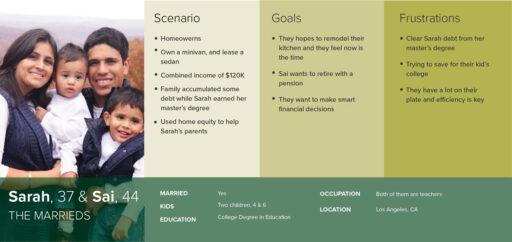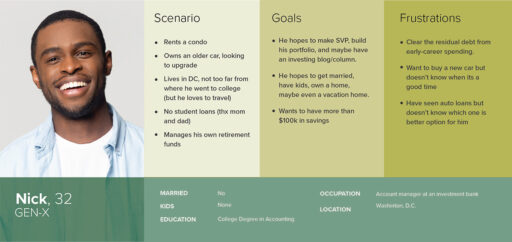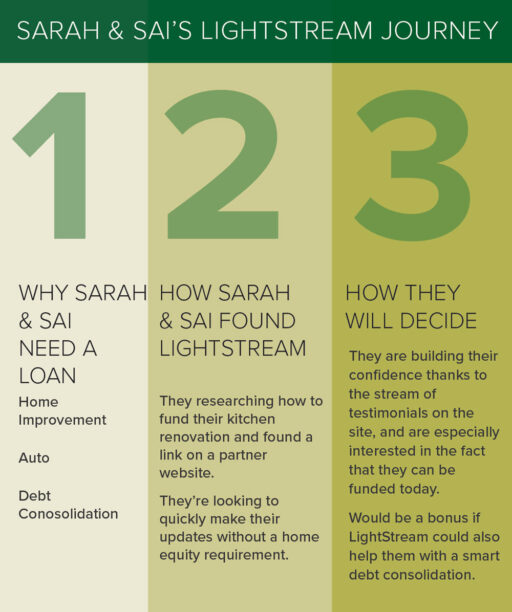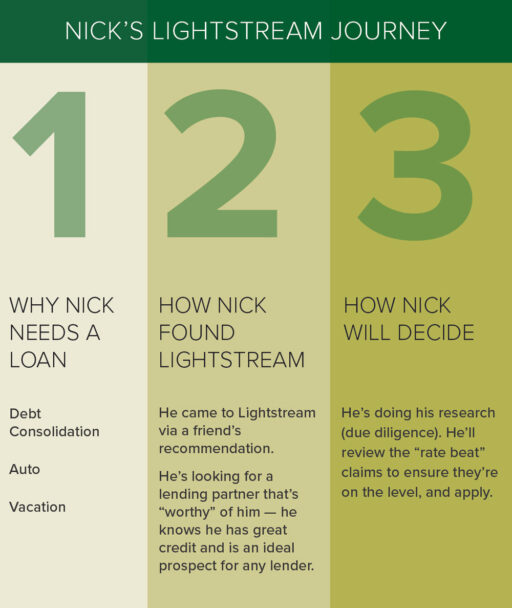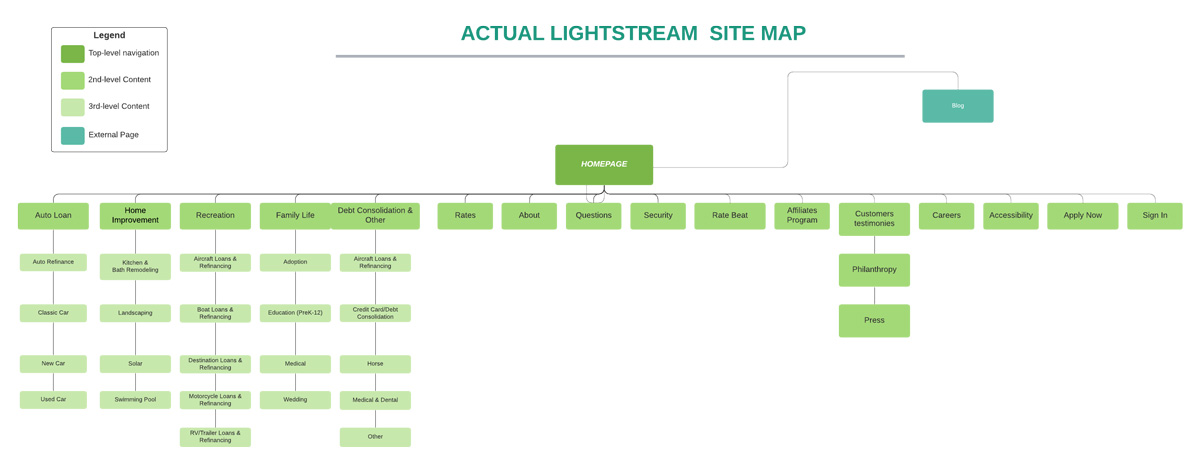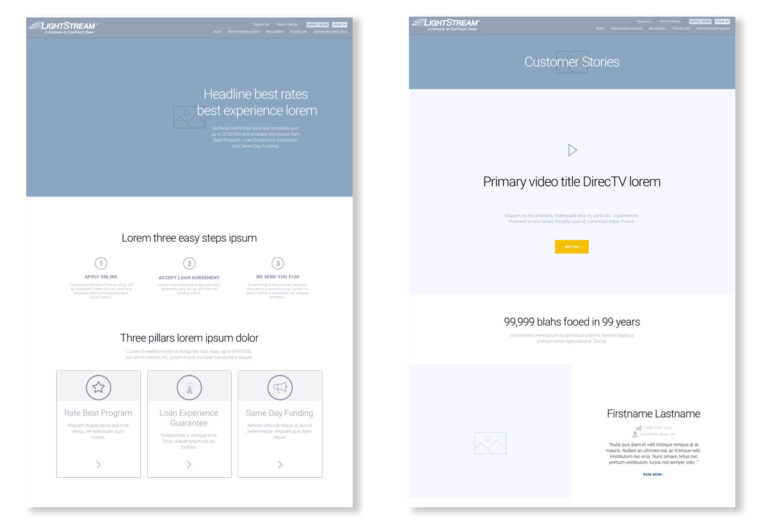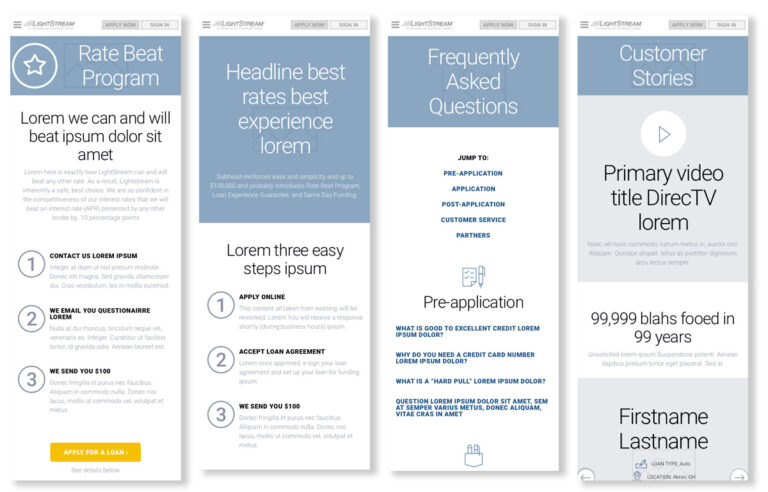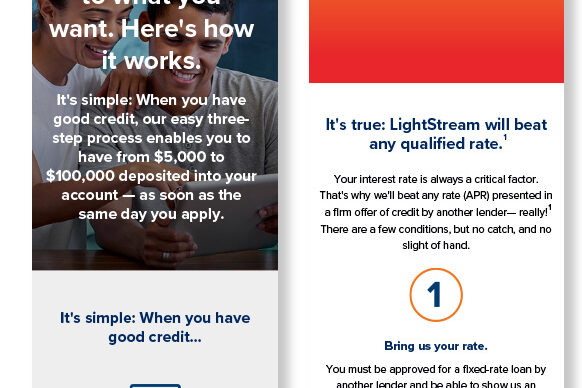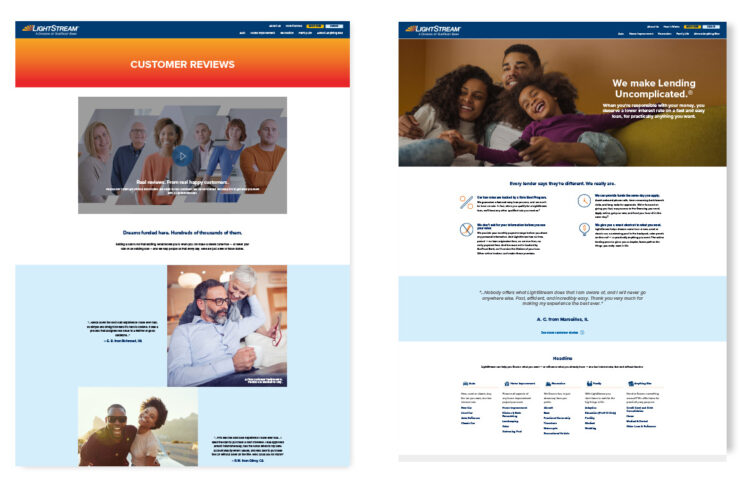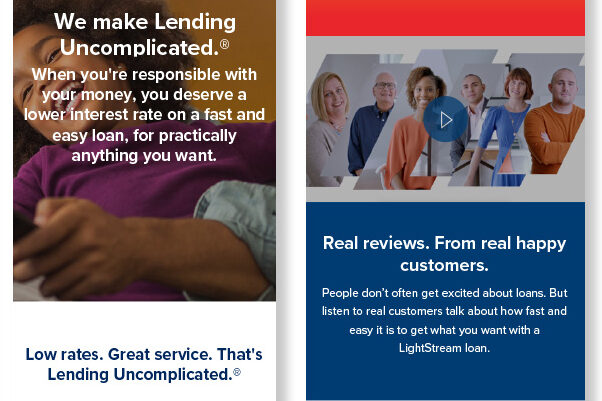This project was carried out while I was working at LightStream, a division of Truist.
Education Pages Section
Visual brand identity, UI design and art direction.
Project summary
LightStream, the online lending division of SunTrust (Now Truist). They offer low-interest rate loans to people with good to excellent credit history for practically anything. The best part is that the process is paperless and online, making it fast and easy. You can receive access to your funds in less than 24 hours! LightStream's digital content goals are aimed at helping to drive individual page goals and guide development in the future.
Information
Client
LigthStream a Division of Truist
ROLE
VP, Visual and Experience Designer
Year
2012-2014
CHALLENGES
We've recently noticed that the navigation pages for About Us, Questions, and Rates & Terms could use some improvement. These pages don't seem to be engaging users enough, which may be contributing to a low conversation rate. Additionally, we've seen that over 62% of unique visitors are leaving these pages, which is definitely concerning. According to industry standards, a bounce rate between 56% and 70% is considered higher than average. We're currently looking into ways to optimize these pages and improve user engagement.
Problem #1
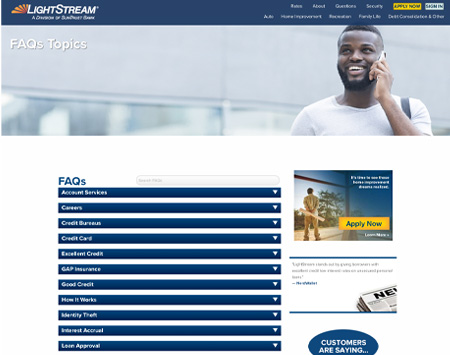
Difficult to Digest
- An excessive amount of information is presented on a single page.
- Too much hidden content.
Problem #2
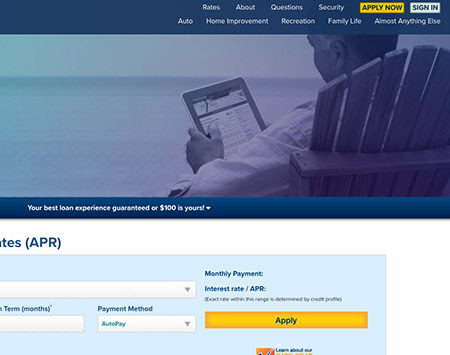
Confusion
- The main benefits for the customer were not displayed promptly.
- The benefit appears without an actionable CTA.
Problem #3
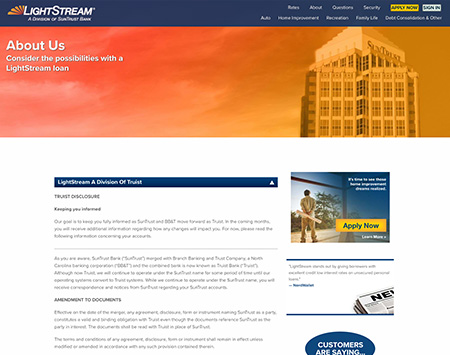
Repetitive Information
- The amount of information that is repeated on the same page.
- Confusing customers can harm the website's SEO.
DESIGN PROCESS
Based on our analysis, we recommend breaking up the information on the page into smaller, more digestible sections. It's essential to ensure that all content is easily accessible and not hidden away. Users should be able to quickly find the information they need without having to search through multiple pages or menus. By simplifying the design and layout of the page, we can create a more user-friendly experience and increase engagement.
AUDIENCE DEFINITION
After reviewing customer feedback and analyzing our data, we developed several ideas to enhance the user experience on our page. Our goal is to make information more accessible and user-friendly while addressing any issues reported by customers. By adopting a data-driven approach, we aim to make informed decisions that lead to a better overall experience for users.
Based on our analysis, we have created a design persona that represents the needs and goals of our target users. This persona will guide our design decisions, ensuring that we create an experience tailored to their needs. Although we would have preferred to conduct user research, we believe our data-driven strategy will still enable us to develop a successful product.
Based on our analysis, we have created a design persona that we believe represents the needs and goals of our target users. This persona will serve as a guide for our design decisions, ensuring that we create a user experience tailored to their needs. While we would have preferred to conduct user research, our data-driven approach will still allow us to create a successful product.
Based on our analysis, we have created a design persona that we believe represents the needs and goals of our target users. This persona will serve as a guide for our design decisions, ensuring that we create a user experience tailored to their needs. While we would have preferred to conduct user research, our data-driven approach will still allow us to create a successful product.
Personas
Journey Maps
One effective way to visually represent the user experience is by mapping out the user journey through various stages and experiences. By highlighting key touchpoints and interactions, we can gain a better understanding of how users navigate our product and ultimately achieve their goals. This type of visualization can also help us identify pain points and areas for improvement in the user experience.
Concepting
The strategy using to build the new site map was Strict Hierarchy, it helps to structure offering more hierarchies. Also, helps navigates the subpages from the “Landing page”. Each subpage (parent), and leads to a series of additional subpages (children).These way will help the users to follow the correct path to reach the child subpages.
Wireframes
When creating layout concepts for optimal solutions, focusing on the more significant elements is often helpful before getting bogged down in the details. By prioritizing layout, structure, and overall design, we can quickly and efficiently generate high-fidelity concepts that accurately represent the best possible user experience. This approach can save time and prevent distractions from minor visual details like colors and typography, allowing us to focus on what matters - delivering a top-notch user experience.
Design Laguague
When creating a design language, it's important to establish clear rules and standards that will help ensure consistency throughout the development process. By defining guidelines for things like typography, color palettes, and layout structure, we can ensure that the design remains cohesive and effective across all pages and platforms. This approach not only saves time and resources but also ensures that the user experience is seamless and intuitive. Ultimately, a well-defined design language is essential for creating a successful and impactful digital product.
Conclusion
Throughout my experience creating the Education pages, I had the opportunity to lead and strategize with various teams, including product, developer, and design teams.
This project allowed me to grow as a product designer and utilize various design processes such as understanding the problem through Experience Design (XD), conducting user research and analyzing the user journey and flow through Information Architecture (IA), prototyping and testing solutions through Interaction Design (IX), applying design guidelines through Interface Design (UI), and delivering solutions that cater to the user through User-Centered-Design/Human-Centered-Design (UX). By incorporating these processes, I was able to provide practical solutions to the problem at hand.
This project allowed me to grow as a product designer and utilize various design processes such as understanding the problem through Experience Design (XD), conducting user research and analyzing the user journey and flow through Information Architecture (IA), prototyping and testing solutions through Interaction Design (IX), applying design guidelines through Interface Design (UI), and delivering solutions that cater to the user through User-Centered-Design/Human-Centered-Design (UX). By incorporating these processes, I was able to provide practical solutions to the problem at hand.

